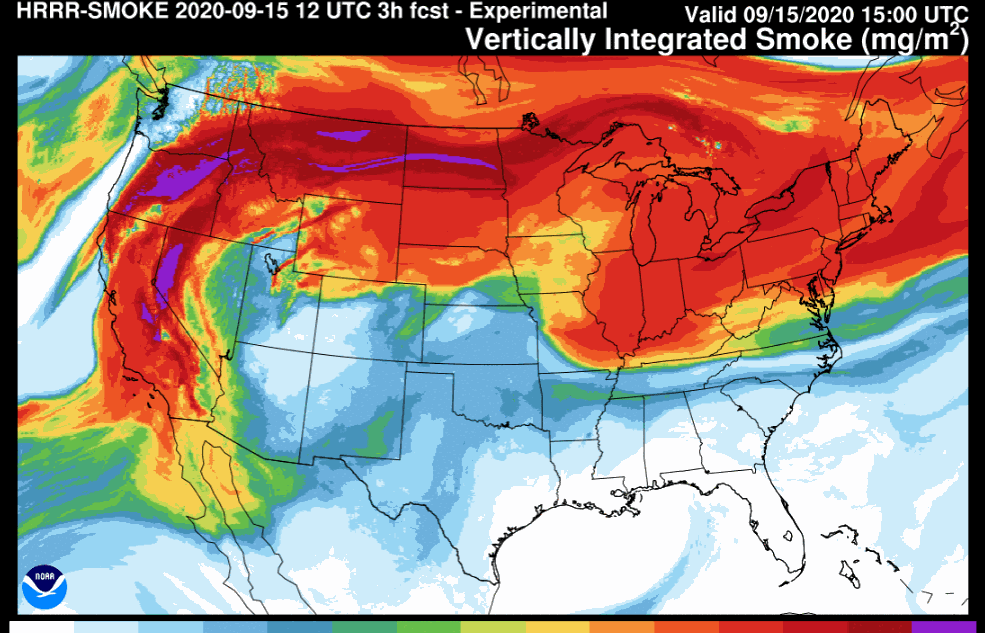
Last week, ESSIC Associate Research Scientist Santiago Gassó was quoted in several news outlets on the unusual high levels of West coast smoke over the Washington area on September 14 and 15.
The smoke, originating from the raging wildfires in California, Oregon and Washington, was carried along by the jet stream.
In a Washington Post article, Gassó clarified that the smoke plume is exceptional in three categories: “The extent of the smoke layer over the U.S. and beyond, permanence of the smoke layer in time and the levels of pollution remaining so high for such long distances.”
Thankfully, smoke traveling so high in the atmosphere (over 20,000 feet) is unlikely to alter air quality on the ground. But wildfire smoke can block the sun from reaching the ground, as the Washington area experienced last week. This solar dimming can have long-term consequences, notes Gassó.
“If these smoke layers stayed up there for a month, you would see changes in temperatures, weather patterns, just because you’re putting something up there that doesn’t belong there. You’re changing the dynamics of the atmosphere,” Gassó commented in a Reuters article.
Over the West coast, smoke from the wildfires have reached altitudes previously unseen. Using laser pulses to measure light particles, the NASA CALIPSO satellite recorded that the smoke plume reached more than 15km high, breaching the stratosphere. This behavior is very unusual for wildfire smoke, more typically seen in volcanoes. When smoke particles reach the stratosphere, they can take several years to dissipate.
“Whether those particulates would lead to net warming or cooling is a bit of an open question,” Gassó told Reuters. “The only experience we have so far has been with volcanoes.”
In addition to his role at ESSIC, Gassó is also a research associate at NASA Goddard. He specializes in observational studies of aerosols, clouds, and their interactions using a combination of satellite detectors. He has published several journal articles on the subject of dust transport at high latitudes as characterized by satellite, model, and surface observations.
To read the full articles, see below:
Washington Post: Smoke in D.C.’s skies traveled thousands of miles from the West Coast





